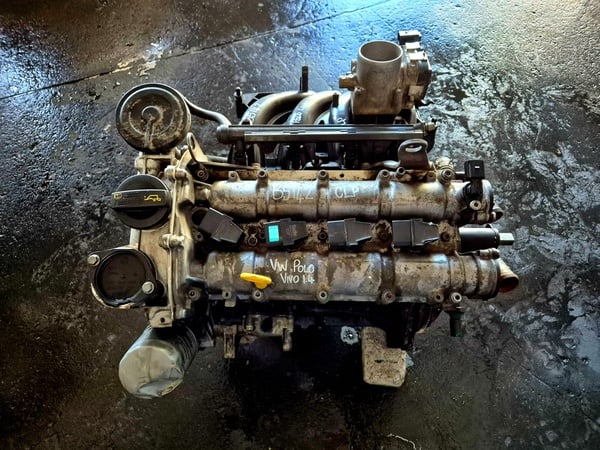Optimize fuel efficiency with a top-tier clp engine.
Optimize fuel efficiency with a top-tier clp engine.
Blog Article
Just How a Clp Engine Can Boost Efficiency in Numerous Industries
The introduction of CLP engines marks a significant shift in operational performance across various fields, driven by their capacity to optimize gas usage and minimize downtime. Industries such as production and logistics stand to acquire considerably from their durable layout and constant power outcome, which guarantee to improve procedures and improve performance. As companies significantly prioritize sustainability together with effectiveness, the role of CLP engines comes to be much more critical. What stays to be seen is how these innovations will certainly shape the future landscape of commercial procedures and their effect on more comprehensive economic patterns (clp engine).
Summary of CLP Engines
CLP engines, or Continual Fluid Propellant engines, stand for a substantial advancement in propulsion innovation, specifically for area applications. These engines make use of a continual feed system that permits for the continual expulsion of propellant, bring about enhanced performance and performance compared to traditional strong or hybrid propulsion systems. By preserving a consistent flow of liquid propellant, CLP engines can achieve more specific thrust control, which is essential for steering spacecraft in numerous goal situations.
The design of CLP engines integrates sophisticated products and ingenious gas administration systems. clp engine. This results in reduced weight and raised reliability, vital aspects for long-duration area missions. In addition, the continual procedure decreases the risk of burning instability, an usual difficulty in conventional rocket engines.

Benefits in Manufacturing
The production of Continuous Fluid Propellant (CLP) engines offers several significant benefits that enhance both efficiency and cost-effectiveness. One of the main advantages is the streamlined production procedure, which minimizes the intricacy connected with traditional propulsion systems. By making use of liquid propellant, makers can achieve better precision in engine performance, bring about enhanced energy output and decreased waste.
Furthermore, CLP engines facilitate a higher degree of modularity, permitting easier combination into numerous production lines. This flexibility can considerably reduce lead times and enhance general operational versatility. Using CLP modern technology additionally tends to decrease the requirement for extensive maintenance due to fewer relocating parts, which equates into minimized downtime and operational expenses.

Applications in Logistics
Leveraging Continuous Fluid Propellant (CLP) engines in logistics offers considerable advantages in operational performance and integrity. These engines offer a robust solution for various transportation needs, enabling the seamless movement of goods across large ranges. The fundamental style of CLP engines enables constant power outcome, which converts into smoother and more predictable transport timetables.
Among the vital applications of CLP engines in logistics is in sturdy freight transport, where they can drive both ground and airborne lorries. Their ability to preserve high efficiency under differing tons problems guarantees that shipment timelines are fulfilled, thereby boosting client complete satisfaction. Furthermore, CLP engines can be incorporated into automated logistics systems, helping with real-time monitoring and enhancing course preparation.
In addition, the toughness of CLP engines decreases maintenance downtime, permitting logistics business to optimize their operational abilities. This is particularly beneficial in warehousing procedures, where efficiency in dealing with and carrying products is crucial. As logistics remains to progress, the combination of CLP engines stands for a forward-thinking strategy that not just boosts efficiency yet additionally supports the market's growing demands for reliability and rate.
Effect On Power Effectiveness
Just How do Continuous Fluid Propellant (CLP) engines boost power effectiveness in transport? CLP engines make use of a regular circulation of fluid gas, enhancing combustion processes and keeping a stable drive output. This style reduces power losses associated with standard burning engines, where fuel shipment can vary and result in ineffectiveness.
The continual operation of CLP engines enables a more reliable thermal cycle, resulting in greater specific impulse compared to standard engines. clp engine. This translates to lowered gas intake for the same amount of job done, substantially decreasing operational expenses throughout numerous transport fields, consisting of aeronautics and maritime industries
Furthermore, the ability of CLP engines to keep optimum performance under differing load problems decreases the requirement for constant velocity and slowdown, better improving fuel performance. Boosted energy performance not just adds to set you back savings however hop over to here additionally leads to lower greenhouse gas discharges, aligning with international sustainability objectives.
Future Trends and Innovations
Emerging developments in Continual Fluid Propellant (CLP) engine technology promise to revolutionize the landscape of transportation efficiency and sustainability. As sectors pivot toward greener choices, CLP engines stand at the forefront, incorporating cutting-edge products and layout techniques that improve efficiency while lessening ecological influence.
Among the most encouraging patterns is the fostering of crossbreed systems that combine CLP engines with renewable resource sources. try this website This harmony can enhance fuel intake and lower exhausts, straightening with international sustainability objectives. Advancements in computational liquid characteristics (CFD) are promoting the design of even more aerodynamically efficient engines, leading to lowered drag and enhanced gas efficiency.
Furthermore, the growth of wise surveillance systems is set to boost functional performances. These systems leverage information analytics and IoT innovation to enhance engine performance in real-time, making certain that the engines run within their most efficient specifications.
As research continues to check out alternative propellant formulations-- such as biofuels and artificial fuels-- the future of CLP engines looks encouraging. By harnessing these innovations, sectors can not only improve their efficiency however additionally add considerably to a cleaner, a lot more sustainable future in transportation.
Verdict
Finally, CLP engines represent a substantial improvement in effectiveness across multiple sectors. Their ability to optimize fuel usage and lower operational costs, integrated with a constant feed system, improves power result and functional integrity. The combination of advanced materials and less relocating parts reduces maintenance demands, while placement with sustainability goals positions CLP engines as an essential technology for the future. Proceeded technology in this field promises more renovations in performance and environmental efficiency.
Report this page